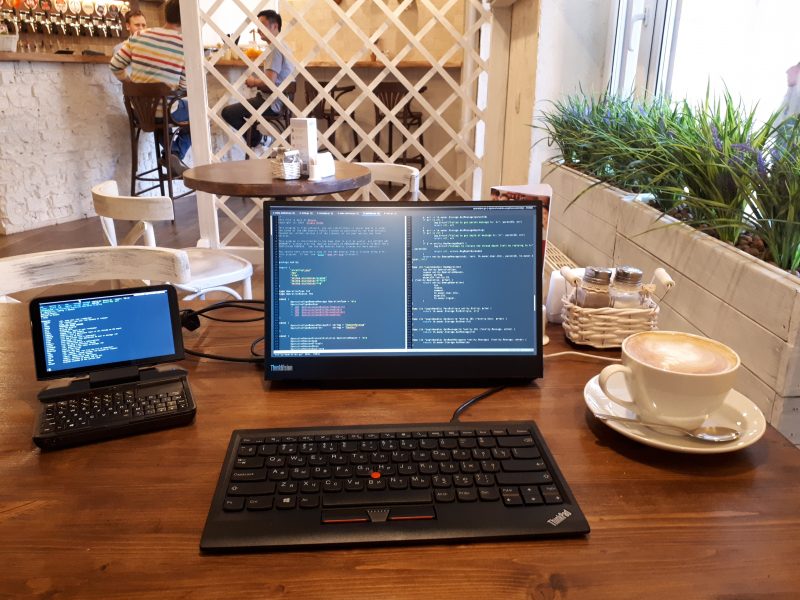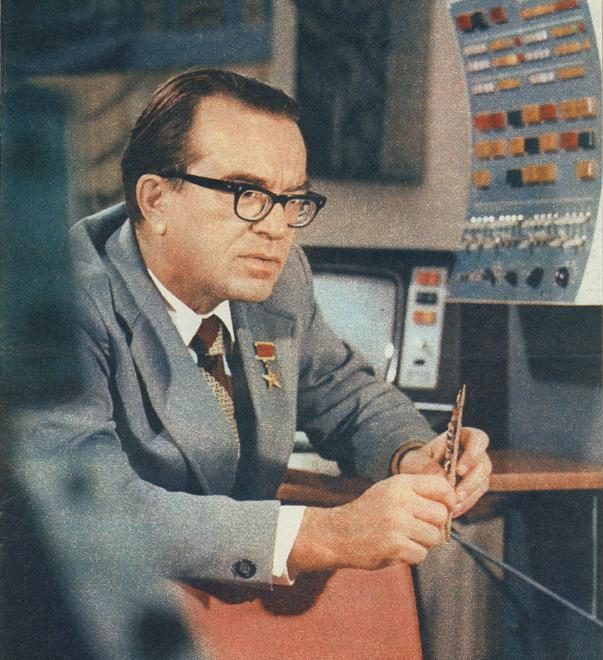I am pleased to present to you a new gallery dedicated to the use of handheld computers in various places. Typically these images are shot in haste, so don’t expect high quality.
Author: Vitaly Minko
Let’s compare the size of One-Netbook OneGx1 Pro and other UMPCs
Meet the One-Netbook A1
One-Netbook A1 is based on 2 year old Core m3-8100Y. However, it’s still quite a remarkable device. It’s the first UMPC of the second epoch with a swivel hinge.
Comparison with Fujitsu Lifebook U820 suggests itself.
Benchmarking OneGx1 Pro with eGPU
I connected EVGA GeForce GTX 1080 FOUNDERS EDITION to One-Netbook OneGx1 Pro via the following eGPU box: Sonnet eGFX Breakaway Box 550.
Here are the main results:
- eGPU can improve 3D performance of OneGx1 Pro by at least 4 times.
- Performance of the video card inserted in the desktop is significantly higher than performance of the same card connected via eGPU box.
- Performance of eGPU is significantly higher when the image is displayed on an external monitor.
More benchmarks of OneGx1 Pro are availavle here.
Impressive backlit of OneGx1 Pro
Let’s take another look at One-Netbook OneGx1 Pro. But this time in low light conditions.
MutantC V3 – DIY handheld computer
mutantC_V3 is an open source handhled. The schematics and 3D models are free (MIT licenced). The device is based on Raspberry Pi and Arduino boards. It’s an open platform: there is an expansion port for adding additional features like GPS or Radio.
The design of the handheld seems to be inspired by Sony UX. It includes hardware keyboard and sliding display with touchscreen.
You can find more info about this device here:
- MutantC homepage mutantc.gitlab.io.
- YouTube channel of the project.
- MutantC PDA introduction on FOSDEM 2021.
Benchmarking OneGx1 Pro
Here are few benchmark results of the One-Netbook OneGx1 Pro.
I was quite surprised, that this handheld is faster than Core i7-4790k.
The graphics processing unit is almost 6 times faster than UHD 615 (Amber Lake m3).
Behold the world’s most powerful handheld
One-Netbook OneGx1 Pro is not only the most powerful handheld computer in the world as of today (January of 2021). It’s also one of the most beautiful handhelds I’ve ever seen.
The device is based on Intel® Core™ i7-1160G7. P
EDIT: Readers asked why I consider OneGx1 Pro the most powerful handheld, not GPD Win3. Let me explain. According to the Indiegogo, Win3 is still a prototype and estimated shipping is "May 2021". So it’s not out for retail yet, but OneGx1 is already available for purchase.
Sharp PC-3100 floppy disk drive
Floppy disk drive for Sharp PC-3100 (CE-301F) is a very rare device. It’s quite hard to find even a decent photo of the device. Let me quote www.tankraider.com:
A late Austrian Sharp user Club Magazine lists a "discounted Group order" with a Price of 8000 Austrian Schilling for the PC-3000, 10,000 Schilling for the PC-3100 (Around 20% more) and – interestingly – about 4700 Schilling for the floppy. Yes the Floppy costed more than half of the PC-3000, making it one of the most expensive floppy drives ever sold at that time… And it explains why the floppy is so rare these days. The Floppy disk drive mentioned in the PC-3000 article obviously also fits for the PC-3100.
Therefore I decided to share few high resolution photos of the disk drive.
More info on Shard PC-3100 is here.
First handheld according to Glushkov
Victor Mikhailovich Glushkov was the founding father of information technology in the Soviet Union and one of the founding fathers of Soviet cybernetics. In 1996 he was awarded the IEEE Computer Pioneer Award, For digital automation of computer architecture. He published nearly 800 printed works. In his book Fundamentals of Paperless Informatics, published a few months after his death (in 1982), he wrote a visionary prediction:
Soon enough paper books, newspapers, and magazines will be no more. Every person will have an electronic notebook—a combination of a flat screen and a mini radio transmitter. No matter where you are in the world, if you key a specific code in the notebook, you will be able to summon texts and images from giant remote databases. This will forever replace not only books, newspapers, and magazines, but also television.
I was curious what actually was the first device matching the Glushkov’s criterias:
- notebook size
- flat screen
- wireless receiver and transmitter
- support of wide area network spanning entire world
- text input capability
As far as I know, the first device which seems to be matching the abovementioned criterias was EO Personal Communicator 440 released in 1992. It is amaizing device in every aspect (the first phablet, innovative OS PenPoint, unusual CPU AT&T Hobbit and so on). However, this device utilized the Cellular Digital Packet Data (CDPD) standard for wireless data transfer. This standard was used in North America and Asia. It failed to become a world-wide network. Therefore someone may doublt whether EO Communicator matches the fourth criteria. In this case, taking into account that the first global cellular network was based on GSM standards, then Nokia 9000 Communicator released in 1996 should be considered as the first handheld according to Glushkov.















































































































